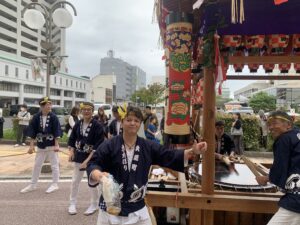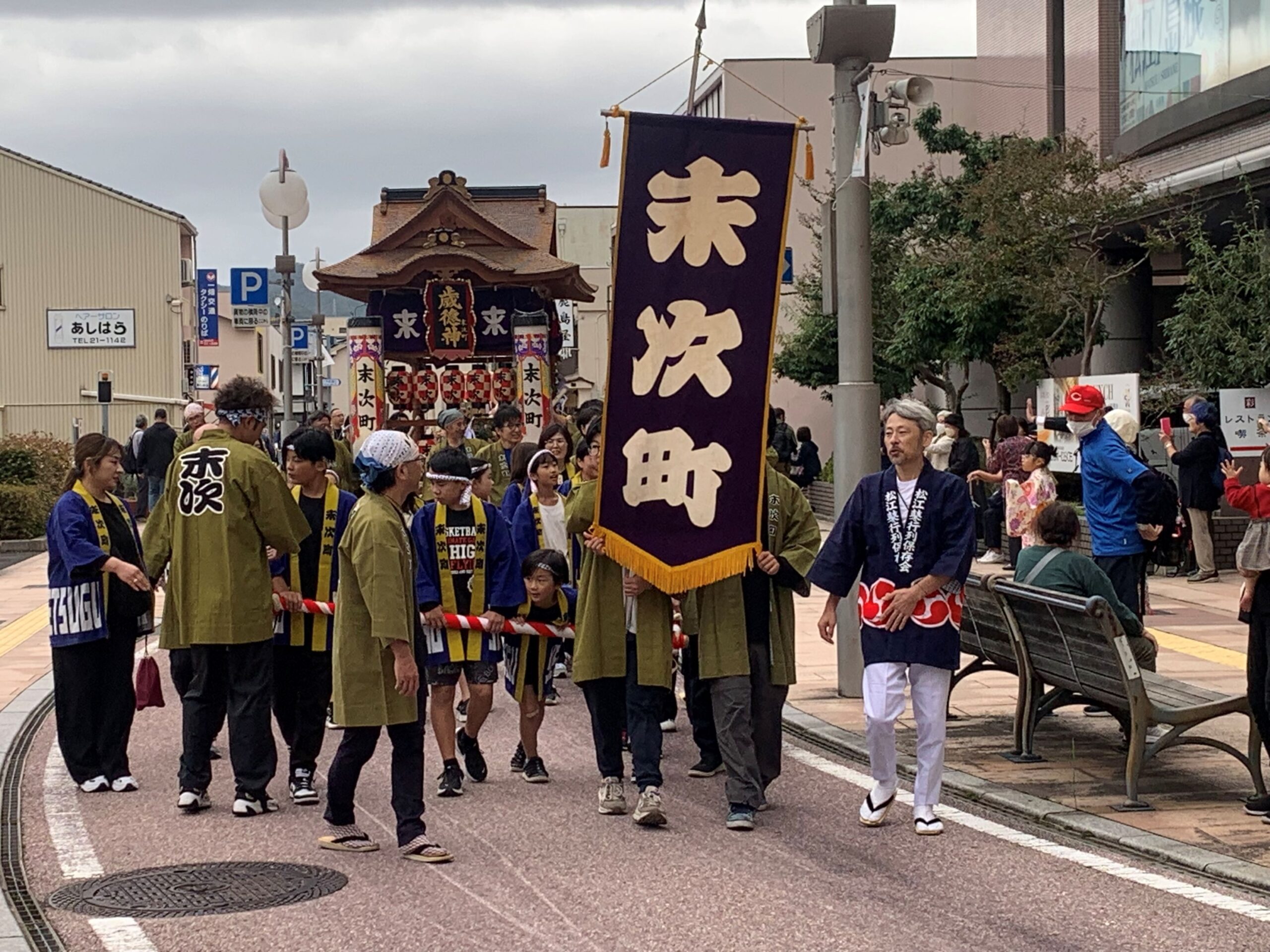Matsue — In the quiet castle town of Matsue, in western Japan, the steady beats of autumn echoed through the streets. Under soft grey October skies, the Dogyoretsu Drum Parade once again filled the city with the sound of taiko drums, flutes and cymbals — a celebration that has resonated here for generations.
Seventeen neighbourhood teams — fifteen from local communities and two from civic groups — took part this year. Wearing brightly coloured happi coats, they pulled ornate wooden floats called doumiya through narrow streets marked with the crests of their districts, each symbolising their devotion to Toshitokujin, the goddess of fortune and the New Year. The drums rolled like thunder, the flutes spiralled through the air, and the bright clash of changara cymbals added a pulse that felt both festive and sacred. To many, it was not a performance, but the heartbeat of the city itself.
Before the procession began, Mayor Akihito Uesada stood at the Matsue Castle forecourt and declared, “Let the sound of drums, flutes and cymbals ring proudly through this castle town of Matsue!” When the first team, Ishibashi Ichi-chome, began its march, the sound surged through the streets. Comprising about 120 members, including children, the team is known for the precision of its performance. Their neighbourhood, once a prosperous merchant district during Japan’s Edo period (1603–1868), still preserves its traditional charm, where the castle towers above in quiet dignity.
The Dogyoretsu Parade traces its origins back more than a thousand years, to the imperial court ceremonies of the Heian period (794–1185). By the early twentieth century, during the Taisho era (1912–1926), it had evolved into the community celebration seen today — floats adorned with lanterns and sacred symbols, carrying not only rhythm but reverence. After the Second World War, its meaning shifted: no longer a tribute to the throne, but a celebration for the people — a prayer for peace, a gesture of unity.
Among the participants this year was Nolan, a Canadian English-language teacher at a local school, who joined the Kitadonomachi team. “People here are so kind,” he said, smiling. “I’m really happy to be part of this community.” The word kita means “north”, and tono means “lord” — a reminder of the area’s historic role at the heart of the city, where pride and hospitality have long intertwined.
From the neighbouring district of Kitahori, Masato Fukuma, who runs a local IT business, lifted a cup of sake and said with relief, “We couldn’t hold the eve festival yesterday because of the rain. But it held off today — the sky was on our side.”
Each doumiya — a traditional wooden float unique to Matsue, carrying taiko drums and musicians — began its 1.5-kilometre journey from the Matsue Castle forecourt to Shirakata Tenmangu Shrine — once the gateway of the castle town’s waterways. Along the route, teams stopped at corners and plazas to showcase their signature melodies — Shagiri, Mitamita and Orochi. The scent of lacquered wood mingled with the aroma of ritual sake, known as omiki, carried by the bearers, drifting through the air as the sound of drums reverberated through the castle town.

In the crowd, Governor Tatsuya Maruyama of Shimane Prefecture paused between official duties to watch.
“From children to elders, every group adds its own touch,” he told The Deities.
“That’s what makes this festival special — it’s full of warmth. It’s a celebration of people.”
In Matsue, rhythm becomes memory, and memory becomes rhythm — the living heartbeat of a city that remembers who it is.
The Dogyoretsu Drum Parade is held every year on the third Sunday of October.
Getting to Matsue
Getting to Matsue is easy, with several comfortable travel options available.
From Tokyo, the Sunrise Izumo overnight sleeper train offers a scenic 12-hour journey with private cabins — a nostalgic yet luxurious way to travel, priced at around ¥50,000 for a round trip.
For a faster route, take the Shinkansen to Okayama Station and transfer to the Yakumo Limited Express, which reaches Matsue in about eight hours for under ¥40,000.
Travellers preferring air travel can take a 90-minute flight from Tokyo to Izumo Airport, followed by a 30-minute bus ride into the city. Rental cars are available near Matsue Station and Izumo Airport, offering flexibility for exploring the region’s historic sites and hot springs.
Whether by rail, air or road, every route to Matsue offers a glimpse of Japan’s quieter, more contemplative side.
— Words and Photography by Takashi Saito, The Deities

